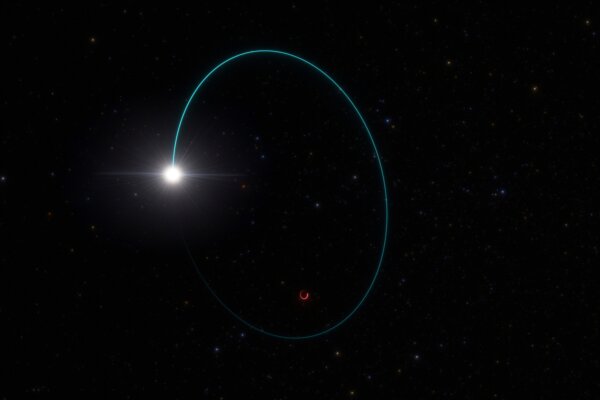
Scientists have made a groundbreaking discovery by identifying a black hole in the Milky Way galaxy that is about 33 times more massive than our sun, making it the second-largest known black hole in our galaxy after the supermassive one at the center. This massive black hole, named Gaia BH3, is situated approximately 2,000 light-years away in the Aquila constellation. It has a companion star orbiting around it, a relatively close distance in cosmic terms.
Black holes are incredibly dense objects with such intense gravity that not even light can escape their grasp, making them challenging to detect. The discovery of Gaia BH3 was made possible through observations from the European Space Agency’s Gaia mission, which is conducting a comprehensive stellar survey. The black hole’s presence was confirmed by data collected from the European Southern Observatory’s Very Large Telescope in Chile and other ground-based observatories, which helped determine its mass.
Pasquale Panuzzo, a research engineer at CNRS in France and lead author of the study published in Astronomy & Astrophysics, described Gaia BH3 as both massive and peculiar. The black hole and its companion star exhibit a unique behavior by traveling in the opposite direction of typical star orbits in the Milky Way.
According to the researchers, Gaia BH3 likely formed from the remnants of a star more than 40 times the mass of the sun. It is classified as a stellar black hole, the largest of its kind known to date, as stated by study co-author Tsevi Mazeh from Tel Aviv University.
While stellar black holes are significant, they are overshadowed by supermassive black holes found at the centers of galaxies. For instance, Sagittarius A* in the Milky Way has a mass 4 million times greater than the sun and is located 26,000 light-years from Earth.
The companion star of Gaia BH3 is approximately 76% the mass of the sun and orbits the black hole in an elliptical path at varying distances, ranging from 4.5 to 29 astronomical units (AU). Scientists are still debating the maximum size that stellar black holes can reach.
Overall, the discovery of Gaia BH3 sheds new light on the diversity and complexity of black holes in our galaxy, challenging existing theories and prompting further research into these enigmatic cosmic entities.






